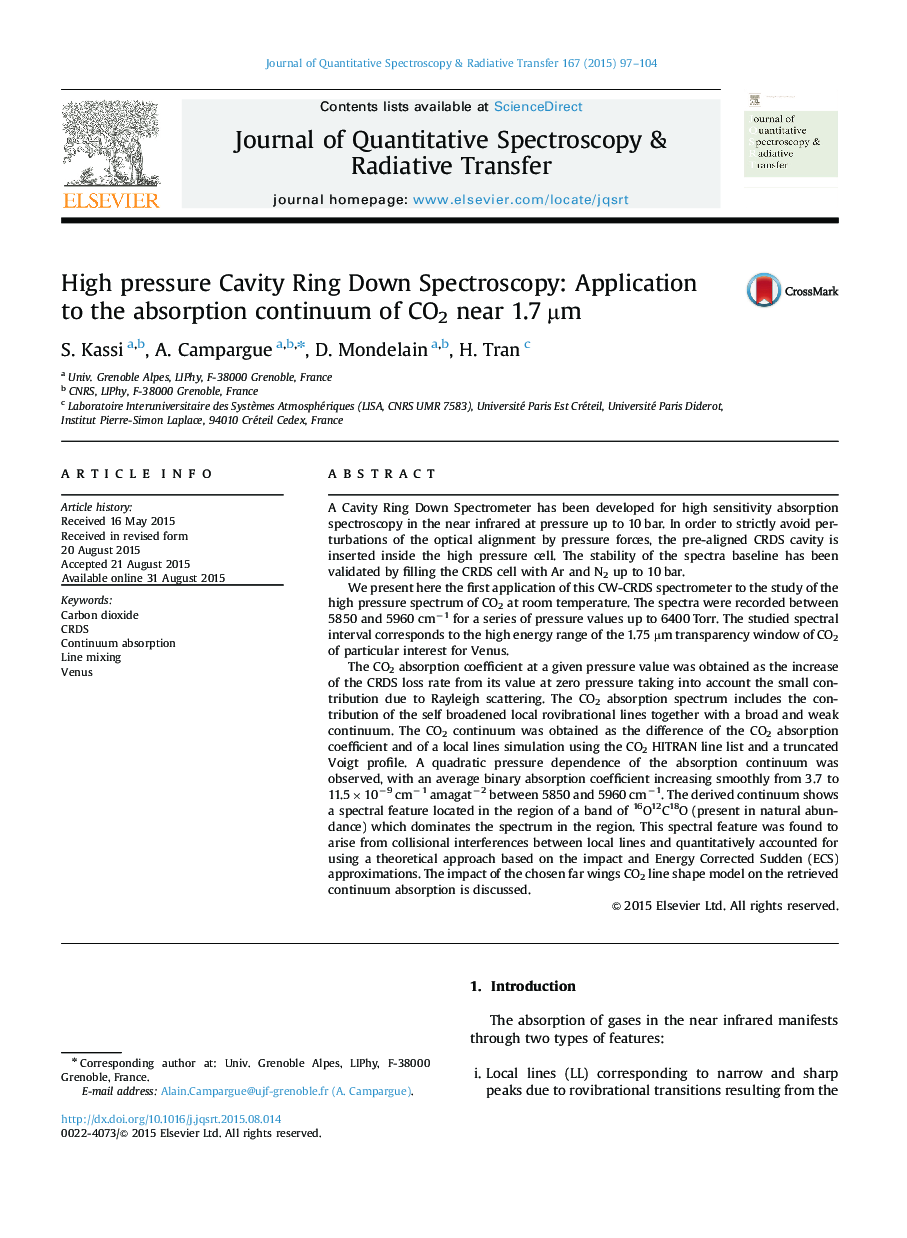| Article ID | Journal | Published Year | Pages | File Type |
|---|---|---|---|---|
| 5427852 | Journal of Quantitative Spectroscopy and Radiative Transfer | 2015 | 8 Pages |
â¢A high pressure Cavity Ring Down Spectrometer has been developed.â¢The weak absorption of CO2 between 5850 and 5960 cmâ1 has been measured up to 10 bar.â¢The continuum absorption has been obtained by subtraction of the local lines.â¢The binary absorption coefficient varies between 3.7 and 11.4Ã10â9 cmâ1 amagatâ2.â¢Line mixing effects are evidenced and theoretically modeled.
A Cavity Ring Down Spectrometer has been developed for high sensitivity absorption spectroscopy in the near infrared at pressure up to 10 bar. In order to strictly avoid perturbations of the optical alignment by pressure forces, the pre-aligned CRDS cavity is inserted inside the high pressure cell. The stability of the spectra baseline has been validated by filling the CRDS cell with Ar and N2 up to 10 bar.We present here the first application of this CW-CRDS spectrometer to the study of the high pressure spectrum of CO2 at room temperature. The spectra were recorded between 5850 and 5960 cmâ1 for a series of pressure values up to 6400 Torr. The studied spectral interval corresponds to the high energy range of the 1.75 µm transparency window of CO2 of particular interest for Venus.The CO2 absorption coefficient at a given pressure value was obtained as the increase of the CRDS loss rate from its value at zero pressure taking into account the small contribution due to Rayleigh scattering. The CO2 absorption spectrum includes the contribution of the self broadened local rovibrational lines together with a broad and weak continuum. The CO2 continuum was obtained as the difference of the CO2 absorption coefficient and of a local lines simulation using the CO2 HITRAN line list and a truncated Voigt profile. A quadratic pressure dependence of the absorption continuum was observed, with an average binary absorption coefficient increasing smoothly from 3.7 to 11.5Ã10â9 cmâ1 amagatâ2 between 5850 and 5960 cmâ1. The derived continuum shows a spectral feature located in the region of a band of 16O12C18O (present in natural abundance) which dominates the spectrum in the region. This spectral feature was found to arise from collisional interferences between local lines and quantitatively accounted for using a theoretical approach based on the impact and Energy Corrected Sudden (ECS) approximations. The impact of the chosen far wings CO2 line shape model on the retrieved continuum absorption is discussed.
